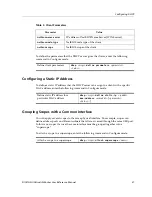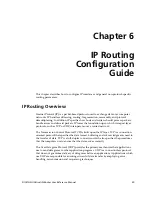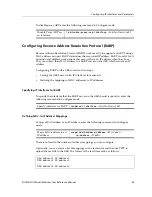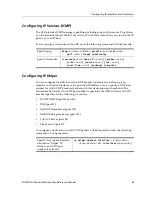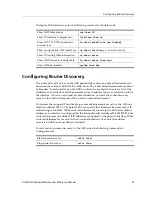
Chapter 6: IP Routing Configuration Guide
60
DIGITAL GIGAswitch/Router User Reference Manual
TCP and UDP also specify “ports,” which identify the application which is using
TCP/UDP. For example, a web server would typically use TCP/UDP port 80, which
specifies HTTP-type traffic.
The GSR supports standards-based TCP, UDP, and IP.
IP Routing Protocols
The GSR supports standards-based unicast and multicast routing. Unicast routing
protocol support includes Interior Gateway Protocols and Exterior Gateway Protocols.
Multicast routing protocols are used to determine how multicast data is transferred in a
routed environment.
Unicast Routing Protocols
Interior Gateway Protocols are used for routing networks that are within an “autonomous
system,” a network of relatively limited size. All IP interior gateway protocols must be
specified with a list of associated networks before routing activities can begin. A routing
process listens to updates from other routers on these networks and broadcasts its own
routing information on those same networks. The GSR supports the following Interior
Gateway Protocols:
•
Routing Information Protocol (RIP) Version 1, 2 (RFC 1058, 1723)
•
Open Shortest Path First (OSPF) Version 2 (RFC 1583)
Exterior Gateway Protocols are used to transfer information between different
“autonomous systems”. The GSR supports the following Exterior Gateway Protocol:
•
Border Gateway Protocol (BGP) Version 3, 4 (RFC 1267, 1771)
Multicast Routing Protocols
IP multicasting allows a host to send traffic to a subset of all hosts. These hosts subscribe
to group membership, thus notifying the GSR of participation in a multicast transmission.
Multicast routing protocols are used to determine which routers have directly attached
hosts, as specified by IGMP, that have membership to a multicast session. Once host
memberships are determined, routers use multicast routing protocols, such as DVMRP, to
forward multicast traffic between routers.






